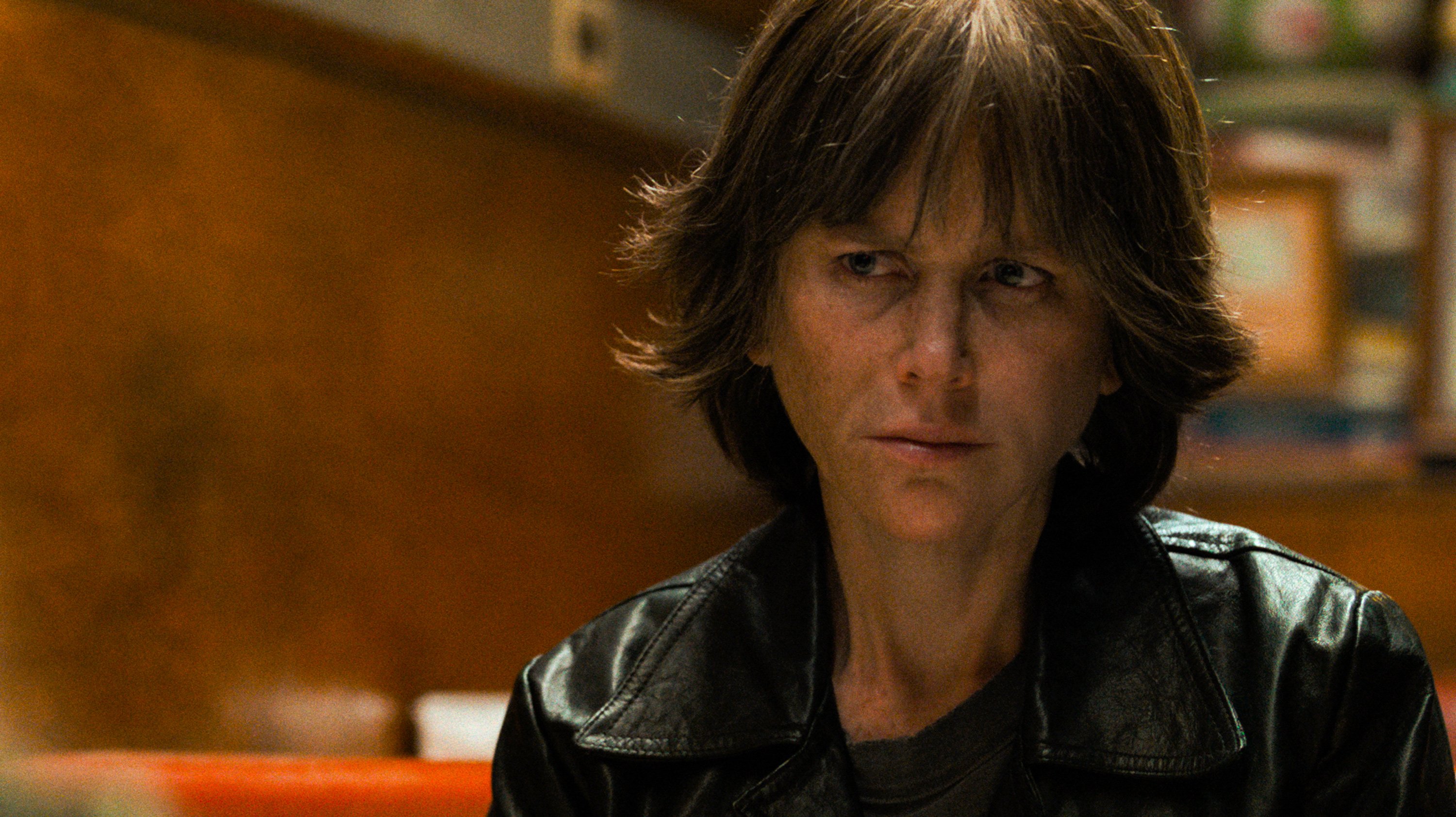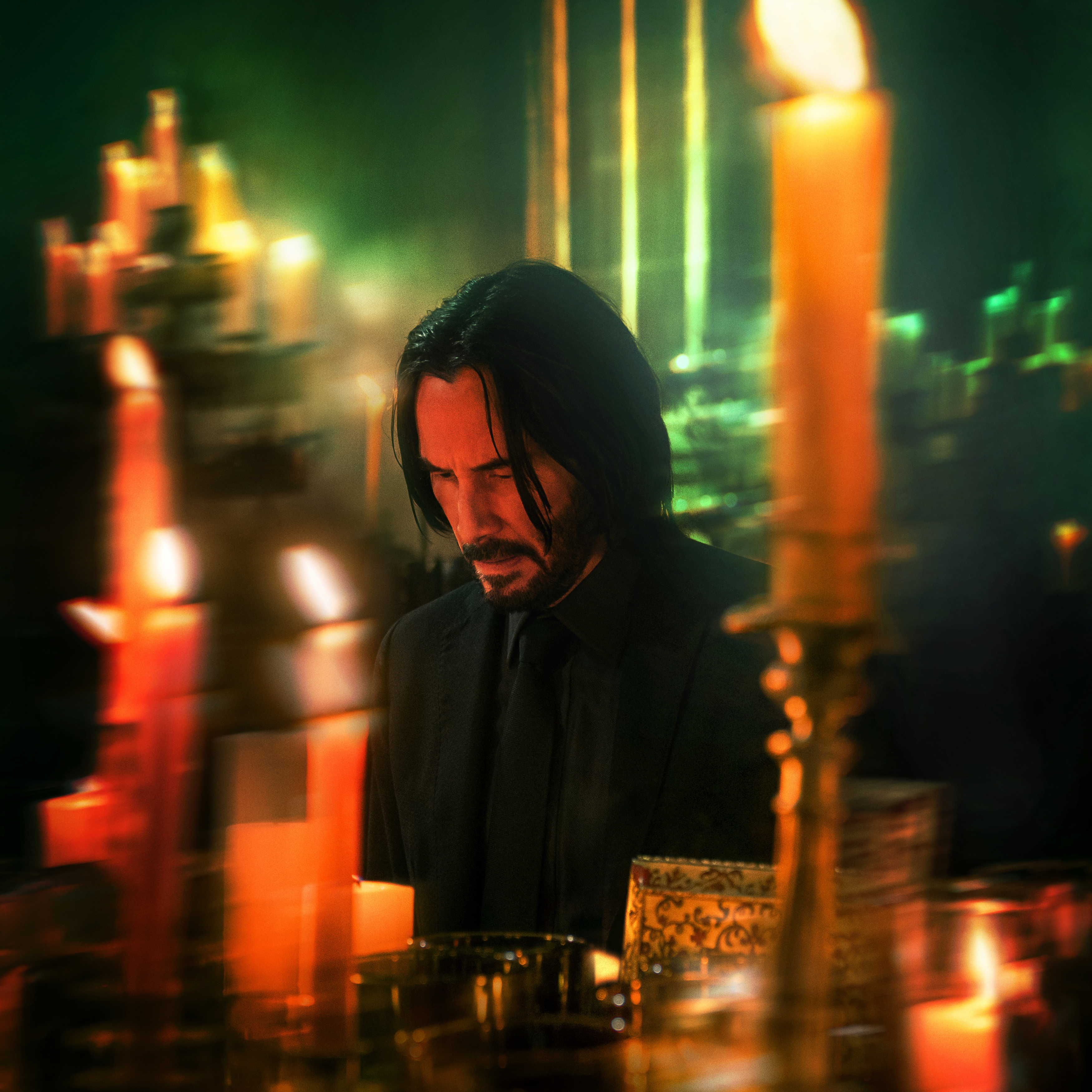Brave New Worlds
June 5, 2015
You all know the trailer voice over cliché “In a world ... ” which was kind of the trademark of the late Don Lafontaine, who even used it in a couple of trailers for movies I wrote. There’s even a great little indie film by Lake Bell called In A World about the world of professional movie voice over talent. Every story takes place in a world, and some of those worlds the audience may not be familiar with.
Even if you are doing a story about a chef in a restaurant, part of your story will be about taking us into that world and showing us how it works -- a “procedural” about restaurant kitchens. The movie Chef does a great job of showing us this world, from details about how food is prepared to the behind-the-scenes politics of what goes on the menu and what does not. No matter what your story is about, it takes place in some world and part of our job is to take the audience through that door marked “employees only” and show them all of the cool things about how that world works.Sometimes, an interesting world is what separates a hit film from a miss. Every once in a while we get a couple of nearly identical films come out at about the same time which allows us to compare them ... like John Wick and Run All Night. Both are about retired hit men who are attacked by the head of the mob’s idiot son which results in them having to take on the entire mob including the mob boss who used to be their friend. In John Wick it’s the Russian Mob and the protagonist is Keanu Reeves who really needed to be in a hit film. In Run All Night it was the Irish Mob and the protagonist is Liam Neeson who seems to have been typecast as “that revenge guy.” A Walk Among The Tombstones was a brooding private eye movie based on one of the great Matt Scudder novels by Lawrence Block, but the trailer made it look like Taken 4. Run All Night cost $50 million (New York City location shooting) and made $67 million worldwide even after a huge push from Warner Bros. Wick cost $20 million (mostly shot on sets) and made $79 million worldwide with a much smaller push from scrappy indie Lionsgate. There’s a sequel in the works for Wick as I write this. It was a modest success and has developed a cult following. (I’m a member of that cult.)
How come Wick did better than Run?
Though Neeson Oversaturation may be part of the problem, I think the “world” of each story was also a major factor.
WHAT A WORLD!
Run All Night (written by Brad Ingelsby) takes place in the city of New York and has a gritty ’70s vibe. The mobsters are Irish, and live in typical neighborhoods and hang out at Irish bars and do typical criminal activities like loan sharking and drug sales. Though I’m a fan of 70s grit, I felt like I’d seen this story before. I swear, some of the houses were either in The Friends of Eddie Coyle (1973) or a block down the street. The bars were generic Irish bars, the housing projects were generic housing projects, the corrupt cops were generic. This was a reality-based world, and we’ve seen it before. So, we had a somewhat generic crime story in a somewhat generic world. Nothing really stood out ... except how old and ragged Nick Nolte looked.
John Wick (written by Derek Kolstad) also takes place in the city of New York, but a side of that city we have never seen before. Instead of the same generic mob world, we are taken down the rabbit hole into a strange new world. That world is what makes the movie unique and interesting. After the Russian mob boss’ idiot son Iosef (Alfie Allen) breaks into Wick’s house, kills the puppy given to him by his wife who just died from cancer, and steals his carefully restored vintage Mustang muscle car, Wick wants revenge. When the Russian mob boss Tarasov (Michael Nyqvist) finds out about this, he sends in a hit squad. In an amazing long-take action scene, Wick fights and kills a dozen armed hit men who invade his house. Then Wick calmly goes to the phone, dials a number, and says he needs a reservation for 12 for dinner.
A clean up crew arrives at his home in a typical Janitorial van driven by Charlie (David Patrick Kelley), but the team of janitors look more like ex convicts. They wrap up the bodies, mop up the blood, and make Wick’s house so clean a CSI team couldn’t find any clue that 12 people were just killed here. This is a great bit of world building because in the criminal world where people frequently get killed, a clean up service makes complete sense. Heck, Nikita (1990) had Victor The Cleaner who removed bodies and blood! The “dinner reservations” is a great way to get past FBI wiretaps, and became a running gag in the film. Wick pays Charlie with gold coins ...
… which are another part of this unique world. This mob has its own money. That makes sense, because cleaning up a dozen dead bodies would probably cost stacks of cash, and that much cash would certainly create some suspicion as well as evidence if someone was arrested or had their home or vehicle searched. So, instead of stacks of US dollars, the mob uses their own gold coins that have their own internal value.
While searching for Iosef, Wick checks into a hotel in downtown New York City. But not just some generic hotel. This is a hotel for criminals run by Winston (Ian McShane) where the manager Charon (Lance Reddick) reiterates the hotel’s rules: no killing on the premises. Your worst enemy can be staying in the room next door, but you must cordial and polite to them. Again, this makes sense for the crime world: There are all kinds of criminals for different factions and crime families, and when they need a hotel room, this is the place. It’s a specialty hotel. There is a hotel in Los Angeles that caters to Japanese tourists and the staff is bilingual so why not a hotel in New York that speaks mobster? From the outside it looks like any other hotel but they only accept reservations from people they know and they don’t accept American Express ... only those gold mob coins.
The great thing about the World of John Wick is that everything looks perfectly normal on the outside but this script takes us inside that world. A typical business hotel is really a place where criminals stay. A janitorial/maid service van is really a clean up crew that criminals use for crime scenes. There’s an auto repair shop run by Aurelio (John Leguizamo) which is really a chop shop for stolen cars and a place where a criminal might get a “mace” (an untraceable car with false papers that will pass most police traffic checks). A local Russian church has a secret back room where the Russian mob has a vault filled with money and blackmail materials.
Nothing is what it seems in this world, which is great! Instead of Run All Night’s world where an apartment is just an apartment, in John Wick’s world an apartment may have secret rooms filled with weapons used by an assassin like Marcus (Willem Dafoe). And a quiet, normal, small businessman like Marcus may secretly be one of the world’s top assassins. This is a cool world, and makes us wonder if it exists behind the facade of our world. It elevates the “one man vs. the mob” story, making it unique and interesting without adding a cent to the budget (though at the premiere screening at the Arclight Cinema’s Q&A Derek said there was a point where the number of dinner reservations increased from 3 to a dozen due to that amazing long-take action scene). These elements are also what attracted Keanu Reeves to work for a fraction of his quote.
Some of you may watch John Wick and think the world is unrealistic and fantastic but “fantastic” has two meanings. As creative writers we deal in imagination and fantasy. We are not journalists. We are not writing documentaries. We are creating shared dreams that an audience will sit in the dark and experience together. So, exposing the secret “world behind our world” is a great dream-like element to add to a story which might be too generic otherwise.
But the world of your story needn’t be fantastic, it just needs to be unique. That may just involve taking us behind the scenes in a world we have never experienced before. That means taking a closer look at your character’s occupations or milieu. Don’t just have a character work in some generic job in some generic office. Be specific and then take us behind the scenes to show us what makes that job fascinating and part of the story. In Alfred Hitchcock’s Frenzy one of the characters runs a wholesale produce shop in London’s Covent Garden district, and we are shown all of the “trade secrets” of his occupation, from how to sell damaged produce to what happens when a shipment of potatoes begins to grow “eyes”. These things are woven into the story so that the film is not only about a man falsely accused of being the notorious “Necktie Murderer” who is even worse that Jack The Ripper, it’s about the produce business! The real killer gets rid of a victim’s corpse by putting her in a 100-pound potato bag along with those potatoes being returned because they have sprouted eyes! The world of wholesale produce colors the entire story and makes it unlike any other thriller.
What is the world in which your story takes place? How is that world unique? How does that world “color” the things that happen in your story?
Imagine the late great Don Lafontaine doing the voice over on the trailer for your movie. “In a world where ... ” What comes next?
END.
Written by: William C.
William C. Martell has written 19 films that were carelessly slapped onto celluloid: 3 for HBO, 2 for Showtime, 2 for USA Net, and a whole bunch of CineMax Originals (which is what happens when an HBO movie goes really, really wrong). He has been on some film festival juries, including Raindance in London (five times – serving with Mike Figgis, Saffron Burrows, Lennie James, Edgar Wright and in 2013 with Julian Assange). The late Roger Ebert discussed his work with Gene Siskel on his 1997 “If We Picked The Winners” Oscar show. He’s quoted a few times in Bordwell’s great book The Way Hollywood Tells It. His USA Net flick Hard Evidence was released on video the same day as the Julia Roberts’ film Something To Talk About and out-rented it in the USA. A few years back he had two films released on DVD on the same day and both made the top-10 rentals. Recently wrote the remake of a hit 1980s horror flick, and later this year should have both a family film shooting. He’s the author of Secrets of Action Screenwriting, Hitchcock: Experiments In Terror, and the Blue Book series.



